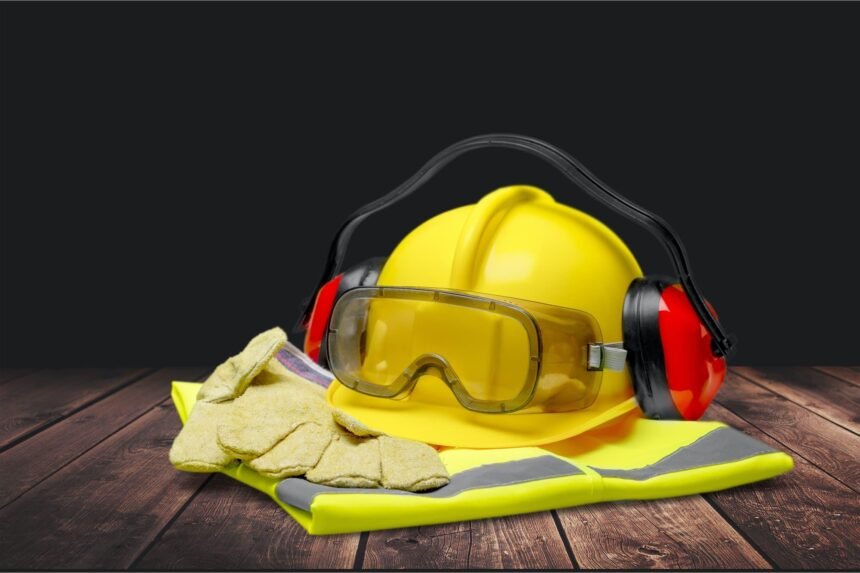Workplace safety is an essential aspect of any organisation, irrespective of the size or industry. Ensuring that employees are safe and healthy is not just a legal requirement, but also a critical factor in maintaining productivity and morale. One of the core components of workplace safety is the proper use of Personal Protective Equipment (PPE). PPE is essential for minimising exposure to hazards that can lead to serious workplace injuries and illnesses.
The Importance of PPE in the Workplace
Personal Protective Equipment refers to protective clothing, helmets, goggles, or other equipment designed to protect the wearer’s body from injury or infection. The hazards addressed by protective equipment include physical, electrical, heat, chemicals, biohazards, and airborne particulates. Within a work environment, it is the last line of defence after all other safety measures have been considered.
PPE is a critical consideration in sectors like healthcare, manufacturing, construction, and any other space where employees could be exposed to potential harm. Employers are responsible for ensuring that their workers are equipped with the necessary PPE, and that they understand how to use it correctly. In many jurisdictions, there are strict regulations governing the provision and use of PPE.
Different Types of PPE
There are various forms of PPE designed to protect different parts of the body. For instance, helmets and hard hats are used to safeguard against head injuries. Goggles and safety glasses are vital for eye protection, particularly in areas where workers are exposed to chemicals or small particles. Hearing protection, such as earplugs and earmuffs, are used in noisy environments.
Protective clothing, including lab coats, gowns, aprons, and coveralls, is used extensively in healthcare and industrial settings to protect against spills and harmful substances. Gloves protect the hands, and, depending on the material, can defend against cuts, punctures, or the spread of pathogens. Respiratory protective equipment, such as masks and respirators, is essential for ensuring workers are not inhaling hazardous substances.
Selecting the Correct PPE for the Job
The selection of PPE is a process that must account for the specific hazards present in a workplace. Not all PPE is created equal, and what works in one industry may not be suitable for another. Conducting a hazard assessment can help determine the type of protection required. Workers also need to be measured correctly, and the equipment must fit properly to be effective.
Moreover, PPE should meet the standards set by regulatory bodies to ensure it provides the intended level of protection. It should be correctly maintained and replaced when necessary. Employees must receive the right training on how to use, store, and maintain their equipment to prevent failure and accidents.
An example of an industry where PPE is critical for safety is the dental industry. Dental professionals are exposed to a variety of risks including, biological, chemical, and ergonomical hazards. High-quality PPE is necessary to provide a barrier between infectious materials and the skin, mouth, nose, or eyes. For dental practices, it’s essential to source ppe from reputable suppliers that comply with regulatory standards.
PPE and the Hierarchy of Controls
The use of PPE falls within the hierarchy of controls which is used to determine how to implement feasible and effective control solutions. The hierarchy ranks control methods from the most effective to the least effective. PPE is considered the last level of protection when all other methods can’t eliminate the risks, such as engineering controls like ventilation or substitution with less hazardous substances.
That being said, PPE plays a crucial role in providing an additional layer of safety, particularly in situations where the risk cannot be completely removed. While PPE should not be the first and only line of defence, its importance cannot be overstated in a comprehensive safety strategy.
Employee Training and Engagement
Training employees on the proper use of PPE is as crucial as the provision of the equipment itself. Employees need to understand the function and limitations of their PPE, how to wear it correctly, and the importance of maintenance and hygiene. Regular training sessions can keep employees informed of any changes in safety procedures and can reinforce the company’s commitment to safety.
Engaging employees in discussions about PPE and their own safety can foster a culture of safety within the organisation. Workers should be encouraged to report any concerns they may have about PPE, and to suggest possible improvements. This collaborative approach can result in higher safety standards and a more invested workforce.
The Role of Employers in PPE Compliance
Employers bear the primary responsibility for providing the necessary PPE and ensuring that their workforce is trained to use it properly. It is critical that they adhere to regulations and conduct regular reviews of their PPE policies and equipment. Employers must also make sure that the PPE they provide is in good condition and appropriate for the risks identified in the hazard assessment.
Proper record keeping and adherence to compliance can prevent many workplace accidents and can protect an organisation from potential legal issues. It is an employer’s duty to provide a safe working environment, and PPE is a significant component of that responsibility.
Conclusion
Personal Protective Equipment is an essential tool in the realm of workplace safety, providing crucial defence against various workplace hazards. The importance of using PPE cannot be overemphasised and it requires a joint effort from both employers and employees to be effective. Selecting the appropriate PPE, providing adequate training, and maintaining a strong safety culture are all integral pieces of the safety puzzle.
Safety in the workplace is a continuous process that demands diligence, awareness, and adherence to best practices, all of which are supported through correct PPE usage. As industries evolve and new risks emerge, staying informed and prepared with the right protective equipment is an investment in the health and well-being of an organisation’s most valuable asset – its people.








